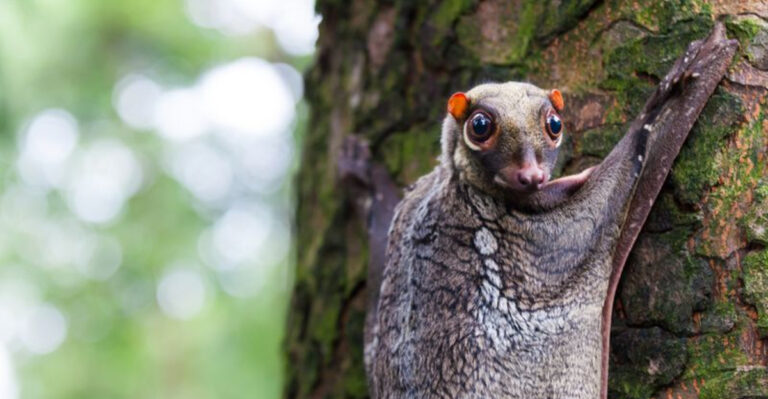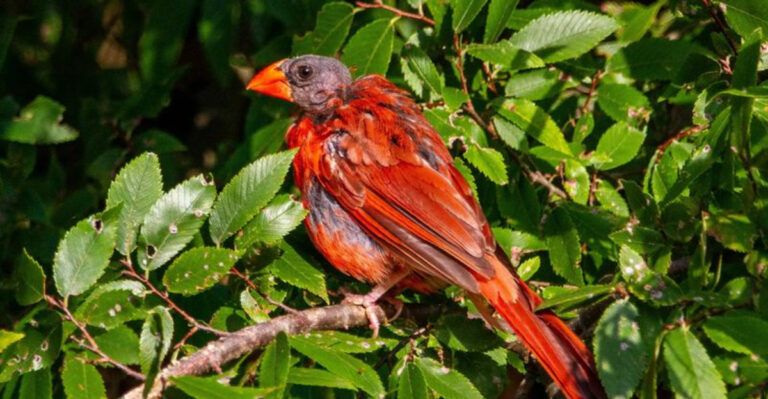10 Simple Ways To Spot A Venomous Snake (And 5 Signs They’re Safe)
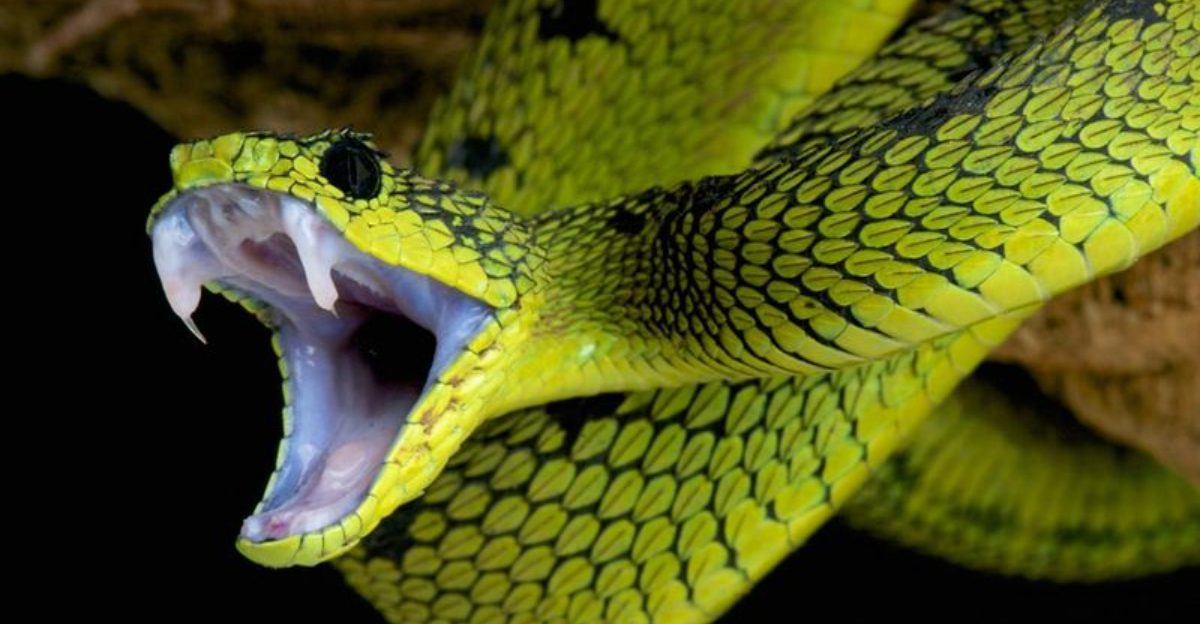
When you’re out hiking or exploring, knowing how to spot a venomous snake could save your life. While most snakes would rather avoid humans than bite them, it’s smart to recognize which ones might pose a danger.
Understanding these simple visual clues can help you stay safe in snake country while also appreciating these fascinating creatures from a respectful distance.
1. Shape Of The Head
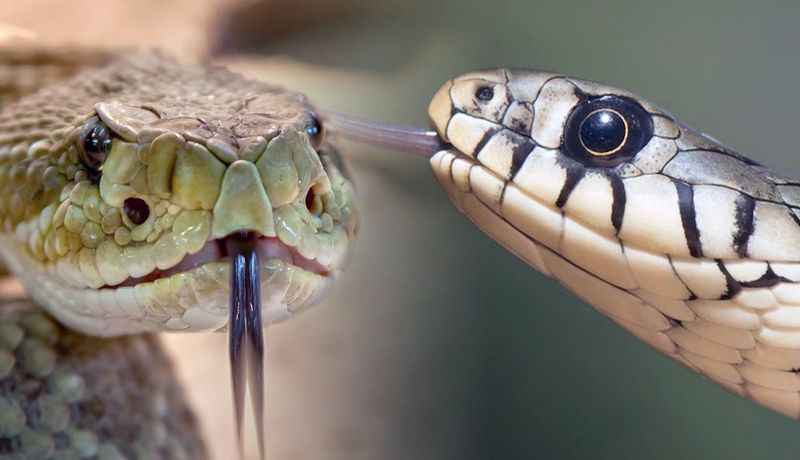
Venomous vipers typically sport a distinctive triangular or arrow-shaped head that’s wider than their neck. This shape houses venom glands on each side of the head.
However, many non-venomous snakes can flatten their heads when threatened, mimicking this triangular shape as a defense mechanism. Always look for additional identifying features before making a judgment.
2. Slit Pupils
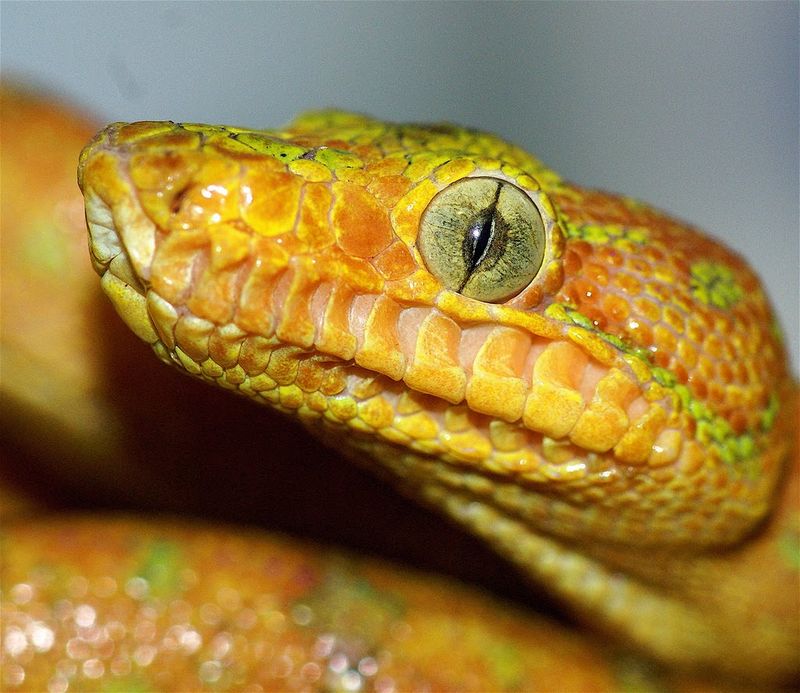
Vertical, cat-like pupils often signal danger in the snake world. Most vipers and other venomous species have these elliptical slits that help them hunt in varying light conditions.
Round pupils typically indicate a non-venomous snake. Remember though, this rule works best in good lighting and from a safe distance—never get close just to check a snake’s eyes!
3. Coloration And Patterns
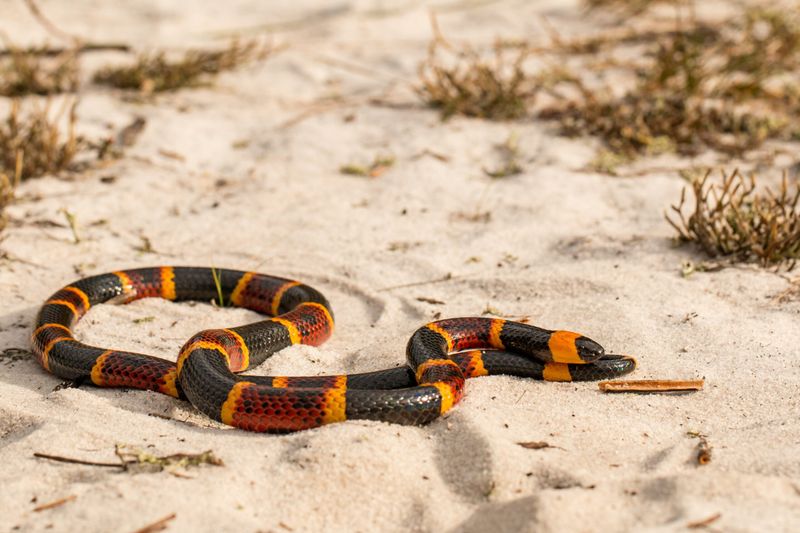
Nature often uses bright colors as warning signs. The coral snake’s striking red, yellow, and black bands serve as a natural caution sign to potential predators.
Many venomous species display bold patterns or vibrant colors. Remember the rhyme: “Red touches yellow, kills a fellow; red touches black, venom lack”—though this only applies to coral snakes in North America.
4. Rattle (In Rattlesnakes)
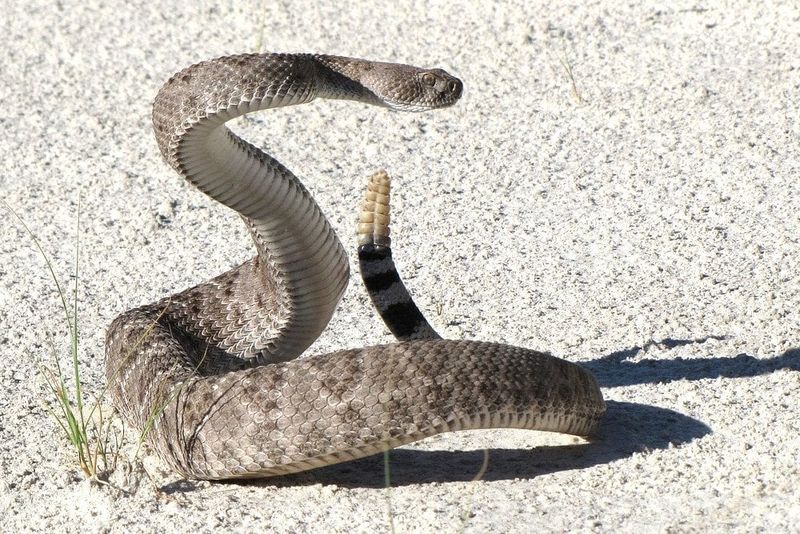
That distinctive buzz is nature’s unmistakable alarm system. Rattlesnakes evolved these specialized tail segments as a warning device to potential threats.
The rattle grows longer as the snake ages, adding a new segment each time it sheds. If you hear this sound while hiking, freeze, locate the source, and slowly back away—the snake is telling you it feels threatened.
5. Tail Shape
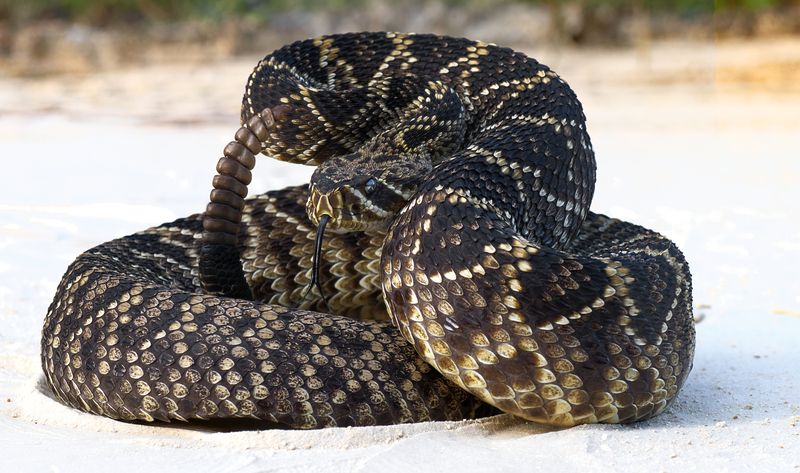
Many venomous snakes have short, thick tails that taper abruptly compared to their body width. This stocky profile is particularly noticeable in species like copperheads and cottonmouths.
In contrast, non-venomous snakes often have longer, gradually tapering tails. This difference relates to their hunting strategies and movement patterns through their environments.
6. Behavioral Traits (Aggression Or Warning Signs)
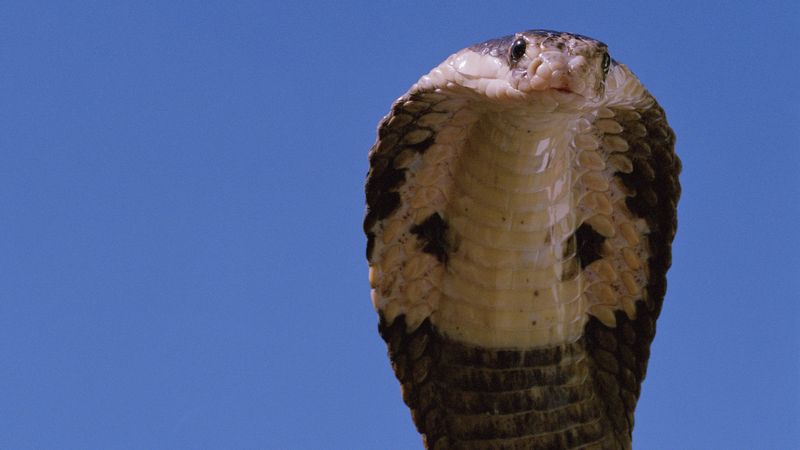
A cobra’s impressive hood display isn’t just for show—it’s a serious warning to back off. Many venomous snakes adopt specific defensive postures when threatened.
Cottonmouths may gape their white mouths, rattlesnakes coil and rattle, and some vipers hiss loudly. These behaviors signal the snake feels cornered and may strike if approached further.
7. Presence Of Fangs
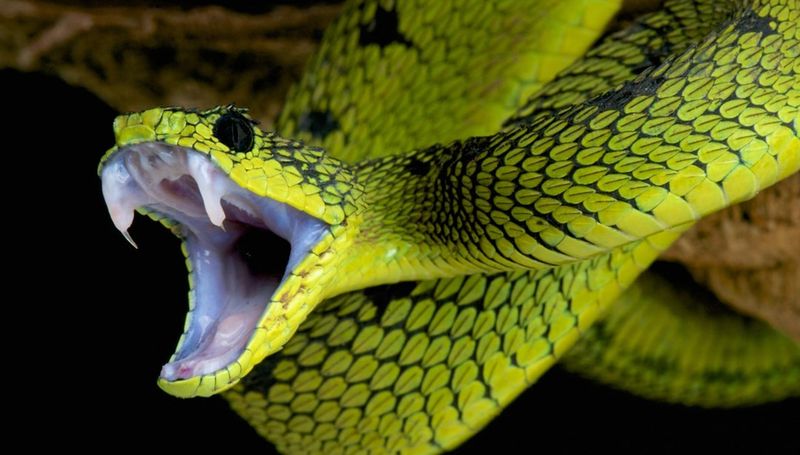
Those long, needle-like fangs are the delivery system for venom. Vipers have hinged fangs that fold back when not in use, allowing them to grow impressively long.
Cobras and other elapids have shorter, fixed front fangs. Non-venomous snakes typically have rows of small teeth rather than prominent fangs. Never attempt to examine a snake’s mouth—observation should only happen from a safe distance.
8. Snakes With Heat Sensing Pits

Those small depressions between the eyes and nostrils on pit vipers aren’t just facial features—they’re sophisticated heat detectors. These pits sense infrared radiation from warm-blooded prey even in complete darkness.
Rattlesnakes, copperheads, and cottonmouths all have these specialized organs. Their presence is a reliable indicator you’re dealing with a venomous species in North America.
9. Habitat And Location

Geography offers major clues about snake danger levels. Rattlesnakes prefer dry, rocky areas while water moccasins inhabit swamps and waterways across the southeastern United States.
Coral snakes favor sandy woodlands in southern regions. Learning which venomous species live in your area dramatically narrows identification challenges when encountering an unknown snake.
10. Sound And Hissing

A loud, forceful hiss often signals a threatened venomous snake. Cottonmouths and copperheads produce particularly distinctive hisses when cornered.
While many non-venomous snakes also hiss, venomous species typically produce more aggressive, sustained sounds. Combined with defensive posturing, these warning sounds should never be ignored—they’re the snake’s final alert before a potential strike.
11. Round Pupils

Those perfect circles staring back at you generally signal a safer encounter. Most non-venomous snakes throughout North America have round pupils similar to humans.
This trait is especially useful for distinguishing harmless snakes from dangerous pit vipers. However, this rule doesn’t apply to coral snakes, which have round pupils despite being highly venomous.
12. Small, Slim Head
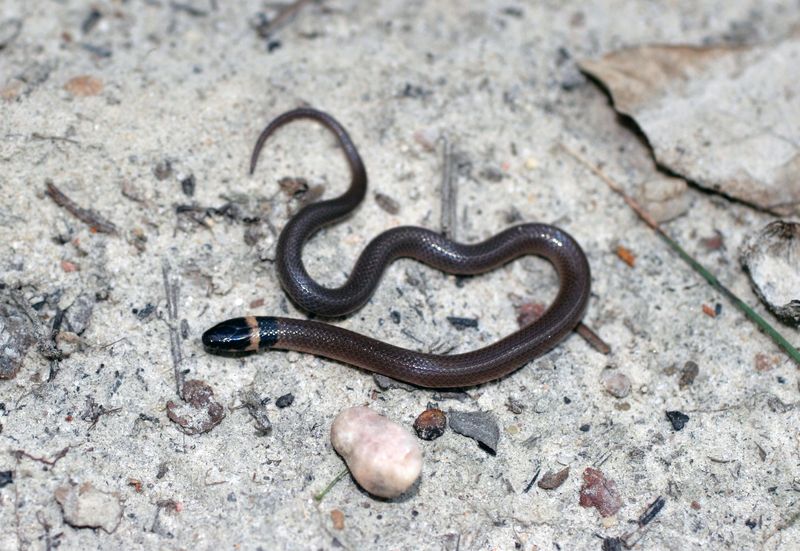
A sleek profile often indicates a harmless snake. Non-venomous species typically have heads that blend smoothly with their bodies without the dramatic widening seen in vipers.
Garter snakes, rat snakes, and kingsnakes all display this more streamlined head shape. This characteristic makes them easily distinguishable from their venomous cousins when viewed from a safe distance.
13. Calm Behavior
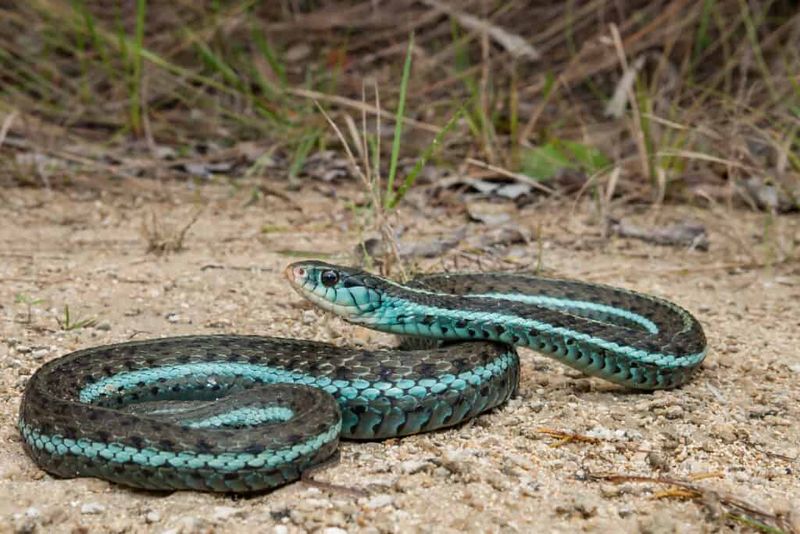
Non-venomous snakes generally prefer flight over fight. Species like garter snakes and rat snakes typically try to escape rather than confront when encountered.
They rarely adopt defensive postures like head-flattening or body-coiling unless cornered. This relaxed demeanor contrasts sharply with the more defensive behaviors of venomous species, though exceptions exist on both sides.
14. Lack Of Rattle
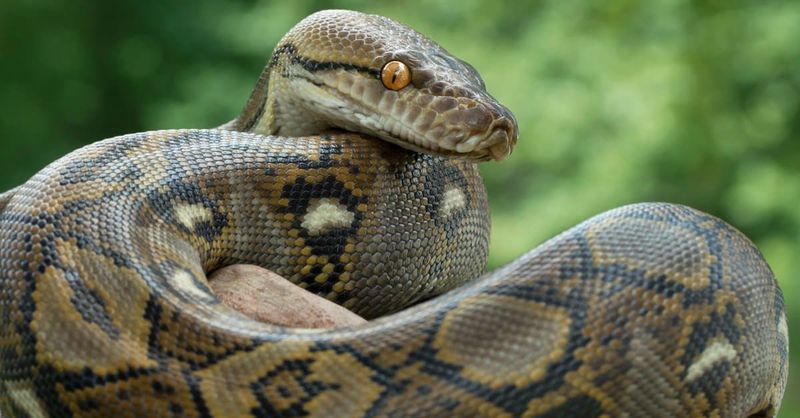
No buzz means lower risk in North American snake encounters. The absence of a rattle eliminates rattlesnakes from consideration, removing a major venomous threat.
Some harmless snakes shake their tails against leaves to mimic rattlers, but they lack the actual rattle structure. This bluff behavior creates rustling sounds that might initially startle you but poses no genuine danger.
15. Non-Venomous Species Known For Being Harmless
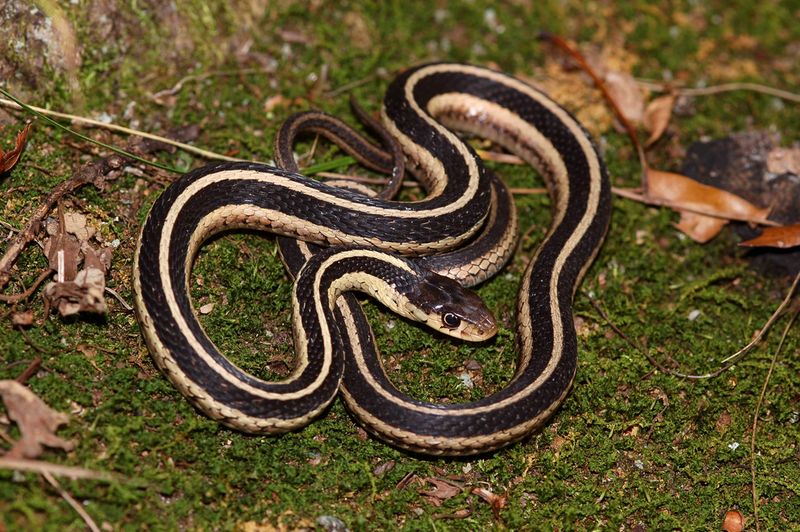
Corn snakes with their vibrant orange patterns often get mistaken for copperheads despite being completely harmless. Kingsnakes, with their striking banded patterns, are actually predators of venomous snakes.
Garter snakes, those common garden visitors with their distinctive stripes, pose virtually no threat to humans. Learning to recognize these friendly species builds confidence for outdoor adventures while reducing unnecessary snake fears.


